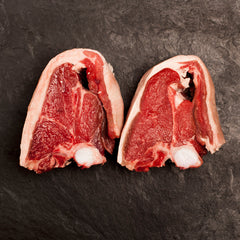The Difference between Lamb, Hogget and Mutton

At Easter we always eat sheep of some variety or other from one of our farmers, but not always lamb. It’s great to be able to have a choice as lamb, hogget and mutton have quite different characteristics:



Lamb
Lambs are typically weaned to a diet of grass from 1-3 months old. They will be very tender by mid-April, but the longer they’ve been out on grass, the better the flavour. A late Easter is better than an early one for eating lamb, but lamb is still ‘lamb’ for up to a year, and really hits its peak in the summer. Roast hot and quick for a delicate colour and flavour.
View lamb products >
Hogget
Hogget’ refers to animals between 1-2 years old, and is a delicious combination of tender lamb and full-flavoured mutton. Hogget can be cooked hot and quick like lamb, or low and slow – anywhere in between and it might toughen up. It is a very versatile meat and has a nice fat to meat ratio.
View hogget products >
Mutton
Older animals which have had a good couple of years grazing on pasture (and preferably wild herbs and mixed grasses) are full of flavour and taste wonderful after a long, gentle cook. Mutton can take strong spices for a more exotic Easter (eg, mutton biryani) but also tastes wonderful roasted with capers or anchovies, tapenade or a generous bunch of Mediterranean herbs. If you want a fall-off-the-bone slow roast, mutton is for you.
View mutton products >

